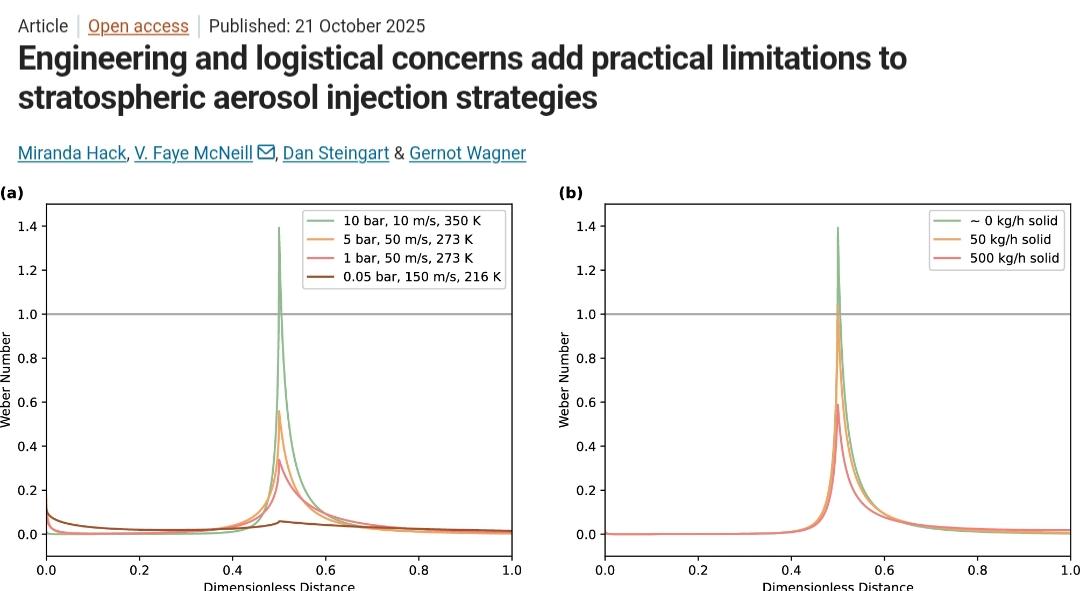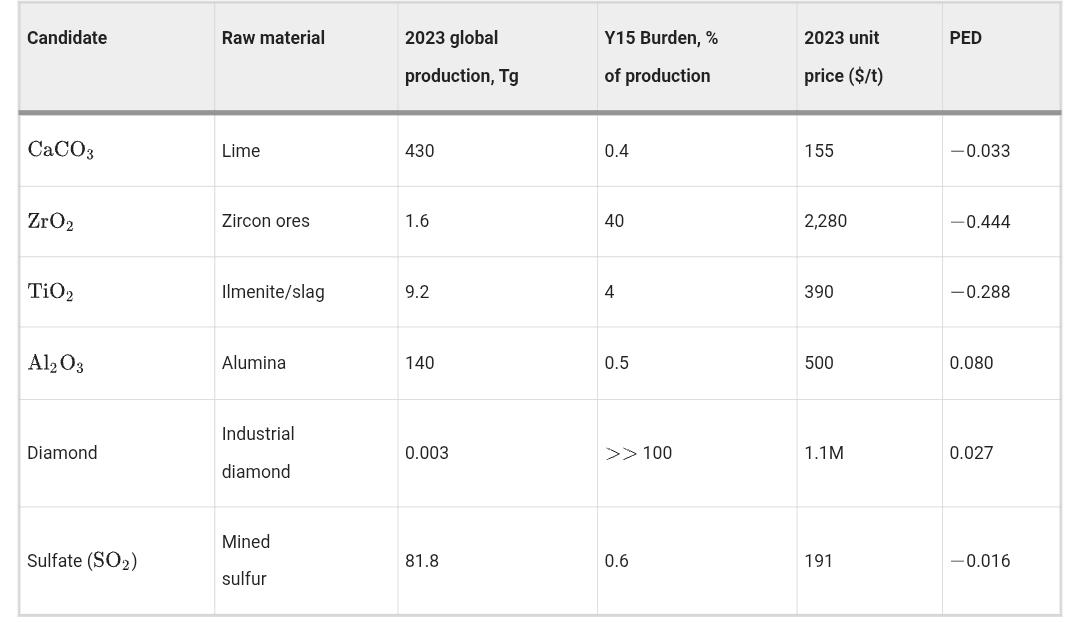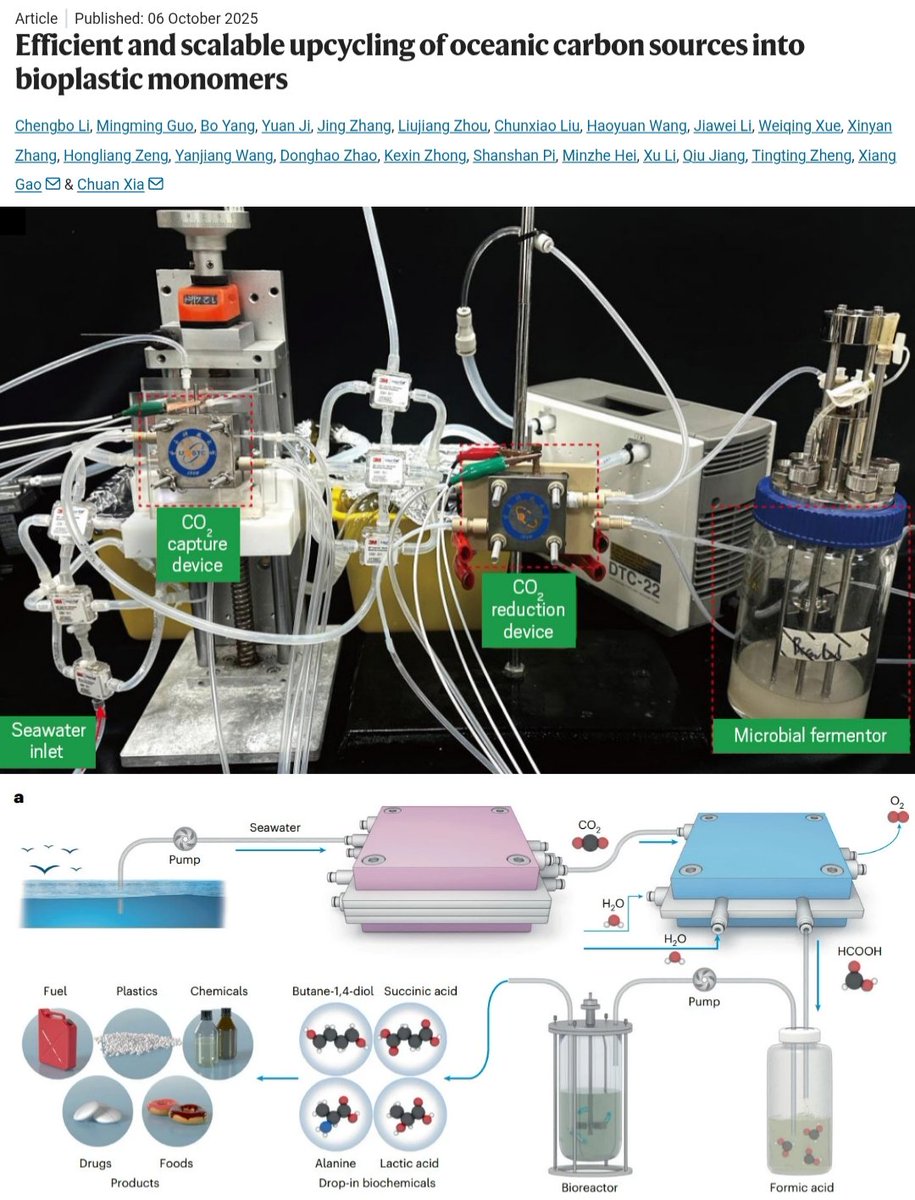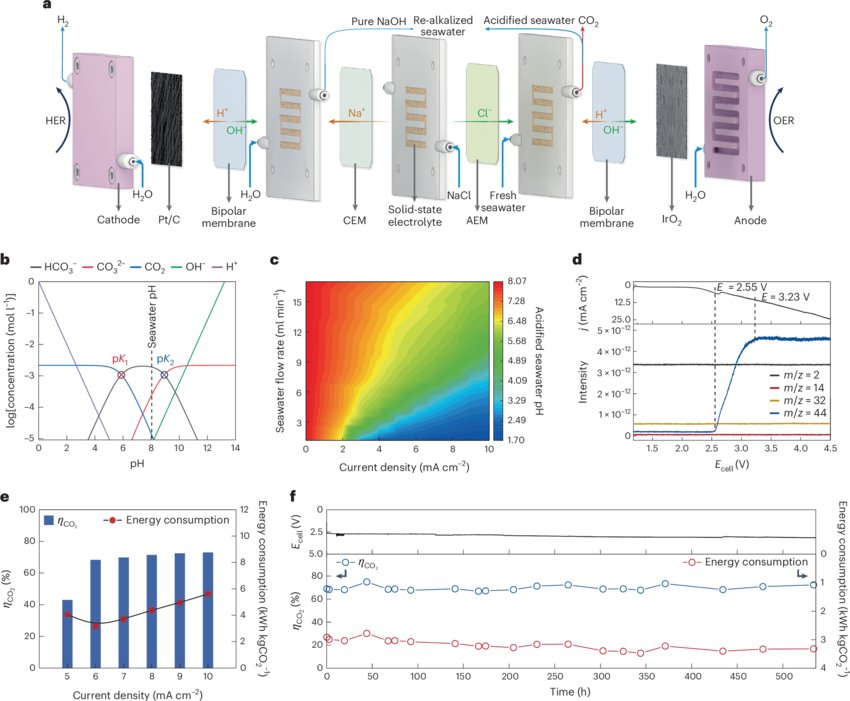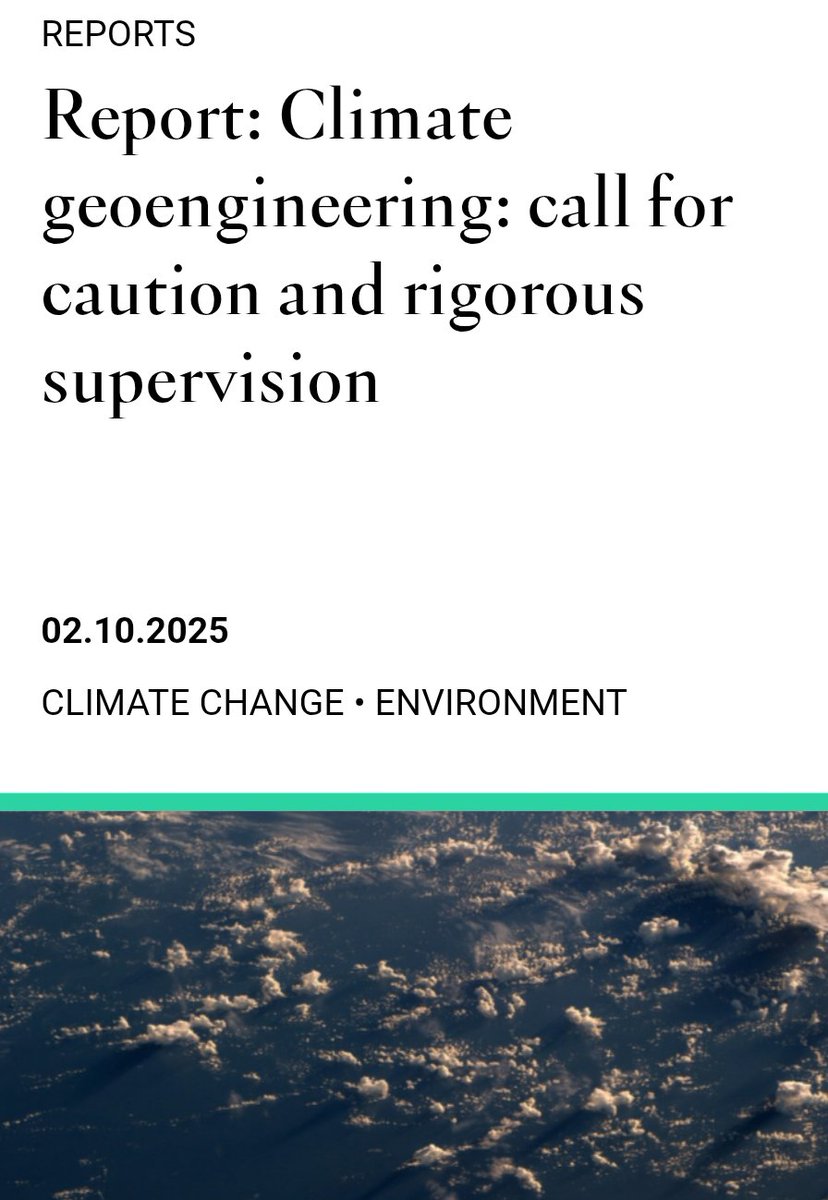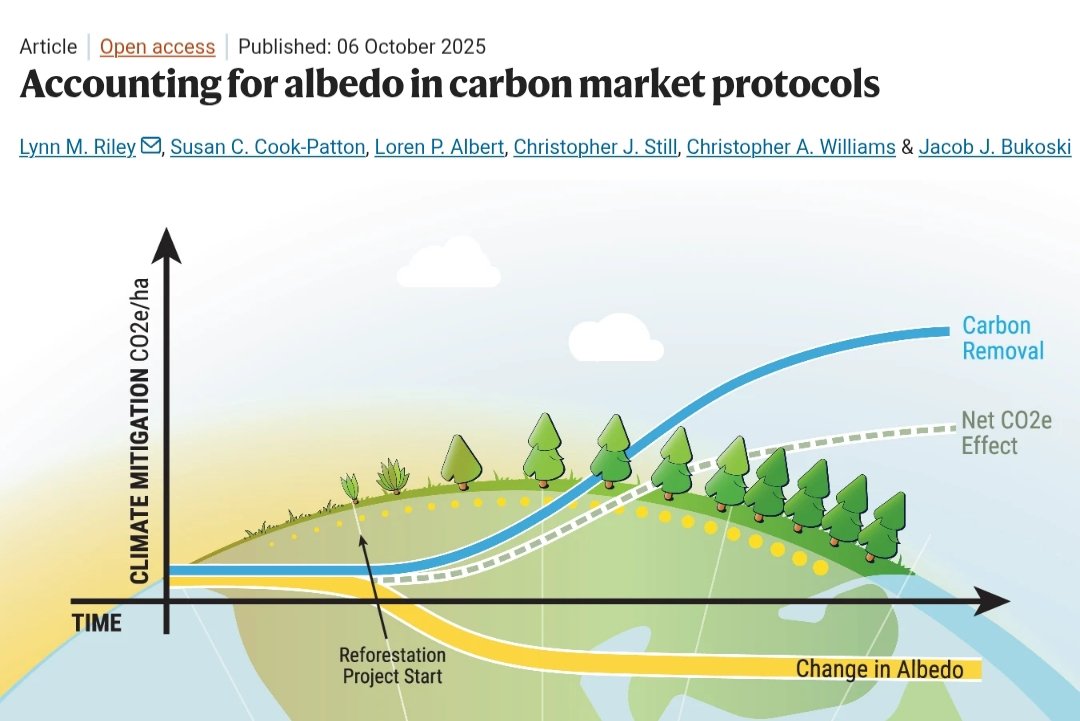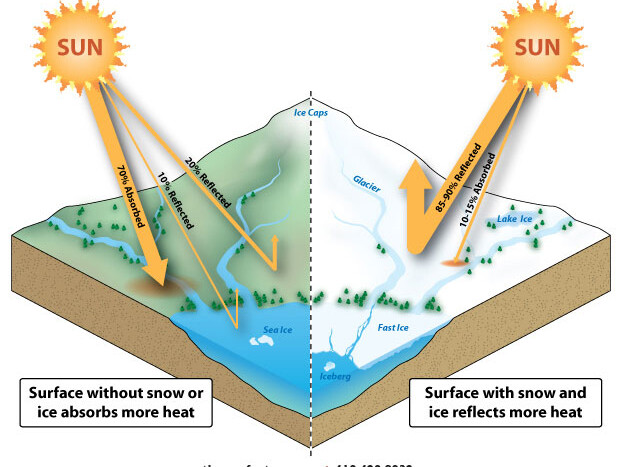🚨A major 6-country survey (N=5,310) finds Europeans support -ve emissions to meet climate goals, but strongly prefer nature-based solutions like afforestation over engineered options like Direct Air Capture. Trust hinges on benefits for nature & future generations.
🧵1/10 #CDR
🧵1/10 #CDR

2/ When allocating how to tackle emissions, respondents clearly prioritized immediate mitigation:
• Renewables: 37.3%
• Behavior change: 24.0%
• Nuclear: 20.2%
• NETPs: 18.5%
➡️ This shows people support #CDR, but believe deep emissions cuts must come first.
• Renewables: 37.3%
• Behavior change: 24.0%
• Nuclear: 20.2%
• NETPs: 18.5%
➡️ This shows people support #CDR, but believe deep emissions cuts must come first.

3/ So which NETPs do they support most?
2 approaches were evaluated:
🌲Afforestation/Reforestation (AR)
🏭Direct Air Capture + Carbon Storage (DACCS)
AR scored +1.91 vs DACCS +0.64
➡️ This means people are 4.36× more likely to support forests as the favored way to remove CO₂.
2 approaches were evaluated:
🌲Afforestation/Reforestation (AR)
🏭Direct Air Capture + Carbon Storage (DACCS)
AR scored +1.91 vs DACCS +0.64
➡️ This means people are 4.36× more likely to support forests as the favored way to remove CO₂.

4/ What’s driving that gap?
Participants rated AR more positively on all key consequences:
• Better for nature, env & future gen
• More effective in limiting warming
• More likely to support other mitigation
➡️AR=climate action that restores ecosystems, not disrupts them.
Participants rated AR more positively on all key consequences:
• Better for nature, env & future gen
• More effective in limiting warming
• More likely to support other mitigation
➡️AR=climate action that restores ecosystems, not disrupts them.

5/ So where does DACCS struggle?
Respondents worry DACCS:
• Requires large energy resources
• Could delay the shift away from fossil fuels
• Carries uncertainty & risk underground
➡️ Approval rises only when every concern is addressed.
Respondents worry DACCS:
• Requires large energy resources
• Could delay the shift away from fossil fuels
• Carries uncertainty & risk underground
➡️ Approval rises only when every concern is addressed.

6/ How strong are these beliefs in predicting acceptance?
•AR acceptance mainly depends on belief it benefits nature
•DACCS acceptance depends on all consequences equally
➡️These perceptions explain ~60% of support for AR & 76% for DACCS.
•AR acceptance mainly depends on belief it benefits nature
•DACCS acceptance depends on all consequences equally
➡️These perceptions explain ~60% of support for AR & 76% for DACCS.

7/ And what about local acceptance concerns?
• AR: slightly less acceptable in one’s own country, but still strong support
• DACCS is not less acceptable domestically. In Germany, Spain, Netherlands support is slightly higher locally.
➡️NIMBY isn’t the dominant narrative
• AR: slightly less acceptable in one’s own country, but still strong support
• DACCS is not less acceptable domestically. In Germany, Spain, Netherlands support is slightly higher locally.
➡️NIMBY isn’t the dominant narrative

8/ Any notable differences across countries?
Countries share common ranking:
✅Renewables + behavior change 1st
✅AR over DACCS everywhere
Notable differences:
•Spain & Lithuania: NETPs > nuclear
•Poland: nuclear > behavior change
•Netherlands + Germany: biggest AR–DACCS gap
Countries share common ranking:
✅Renewables + behavior change 1st
✅AR over DACCS everywhere
Notable differences:
•Spain & Lithuania: NETPs > nuclear
•Poland: nuclear > behavior change
•Netherlands + Germany: biggest AR–DACCS gap

9/ What does this mean for policy?
Europeans support a balanced strategy:
• Rapid decarbonization 1st
• NETPs strategically scaled
• AR as the public-trusted foundation
• DACCS built with transparency, strong governance & ecological safeguards
Europeans support a balanced strategy:
• Rapid decarbonization 1st
• NETPs strategically scaled
• AR as the public-trusted foundation
• DACCS built with transparency, strong governance & ecological safeguards
📝For more details, read the study entitled "Forest or machine? Public perceptions and acceptability of negative emissions technologies and practices across six European countries" here:
🧵10/10 #CDR #DAC #Forestslink.springer.com/article/10.100…
🧵10/10 #CDR #DAC #Forestslink.springer.com/article/10.100…
"unroll" @threadreaderapp
• • •
Missing some Tweet in this thread? You can try to
force a refresh


